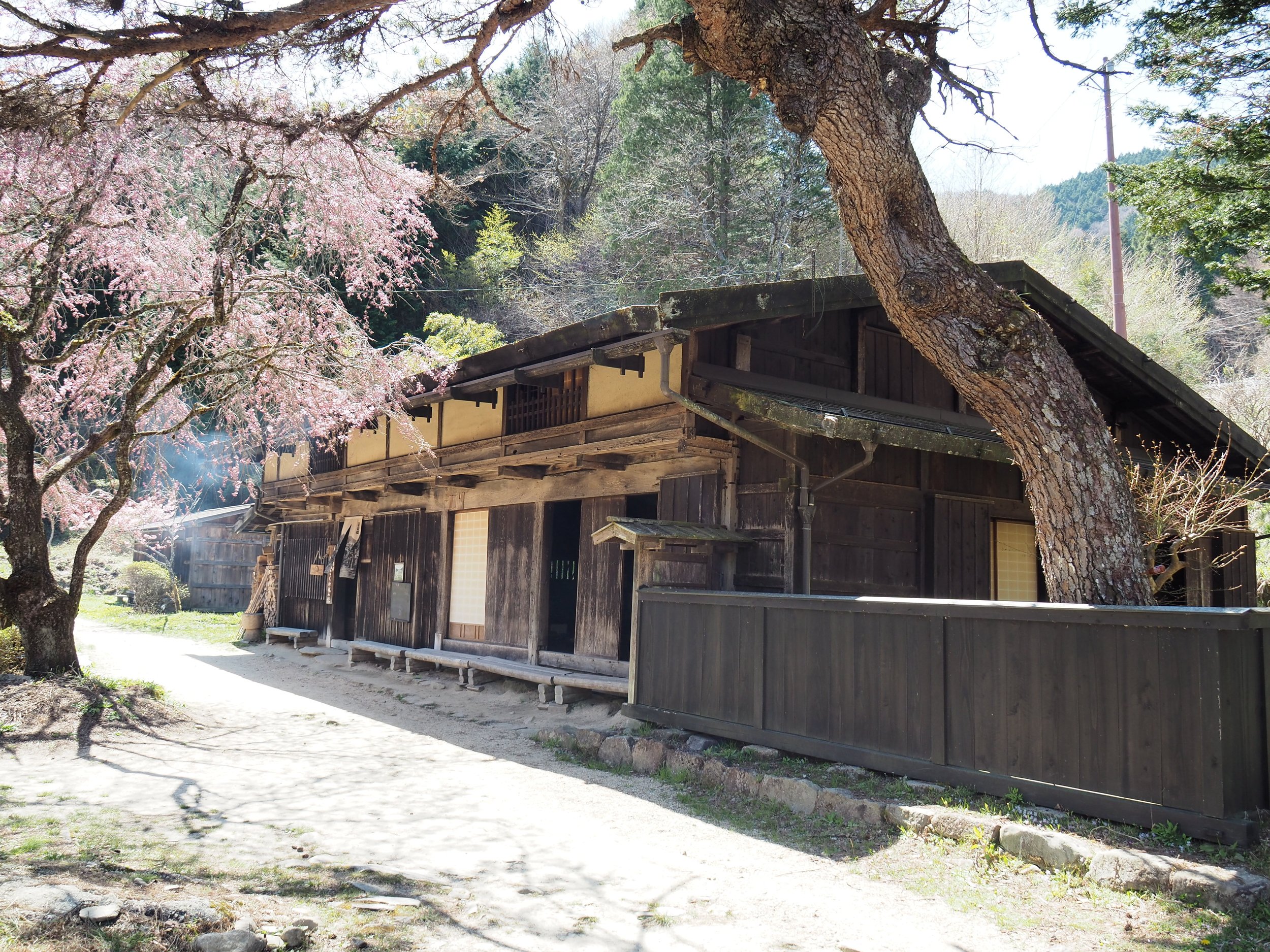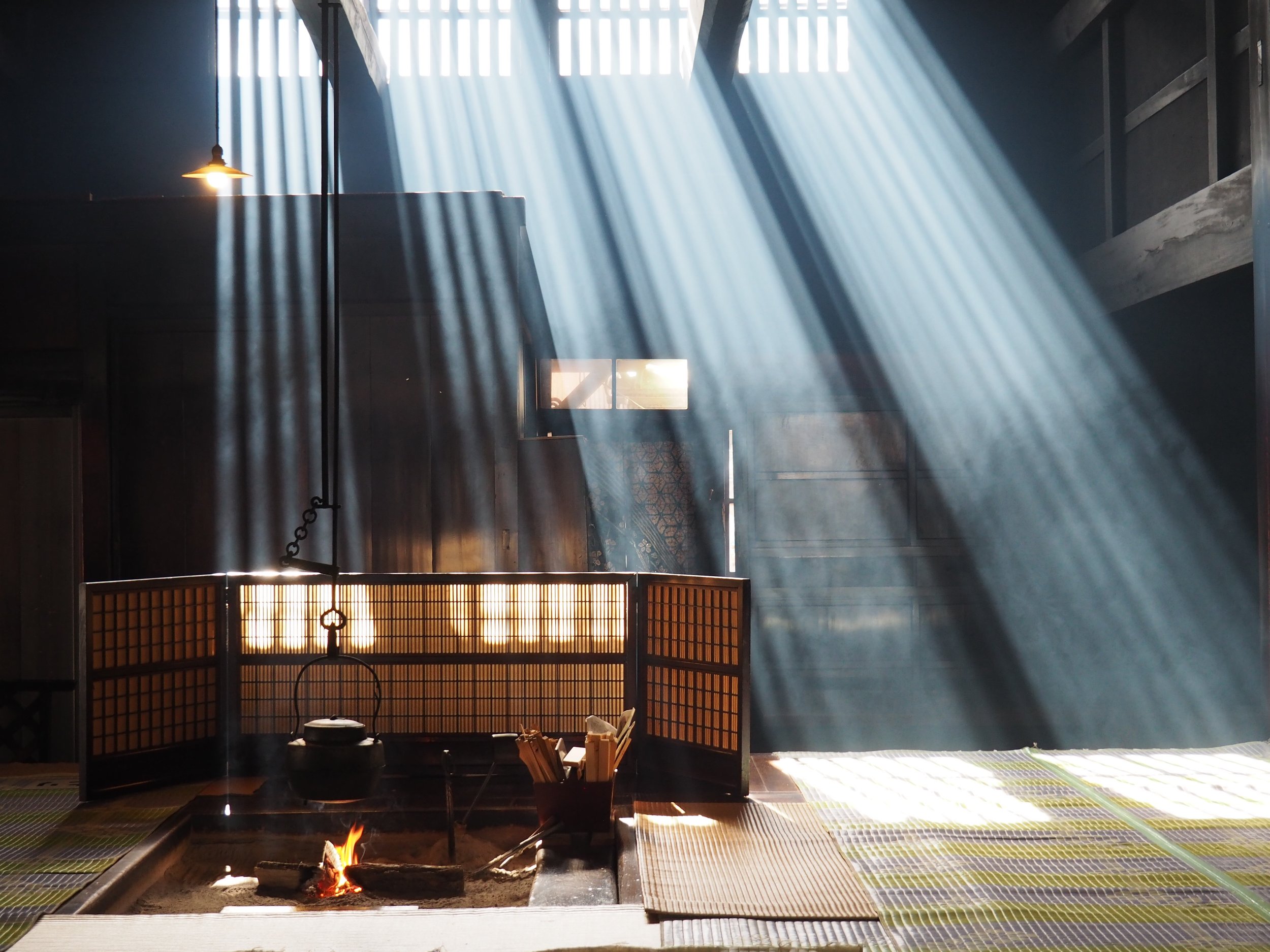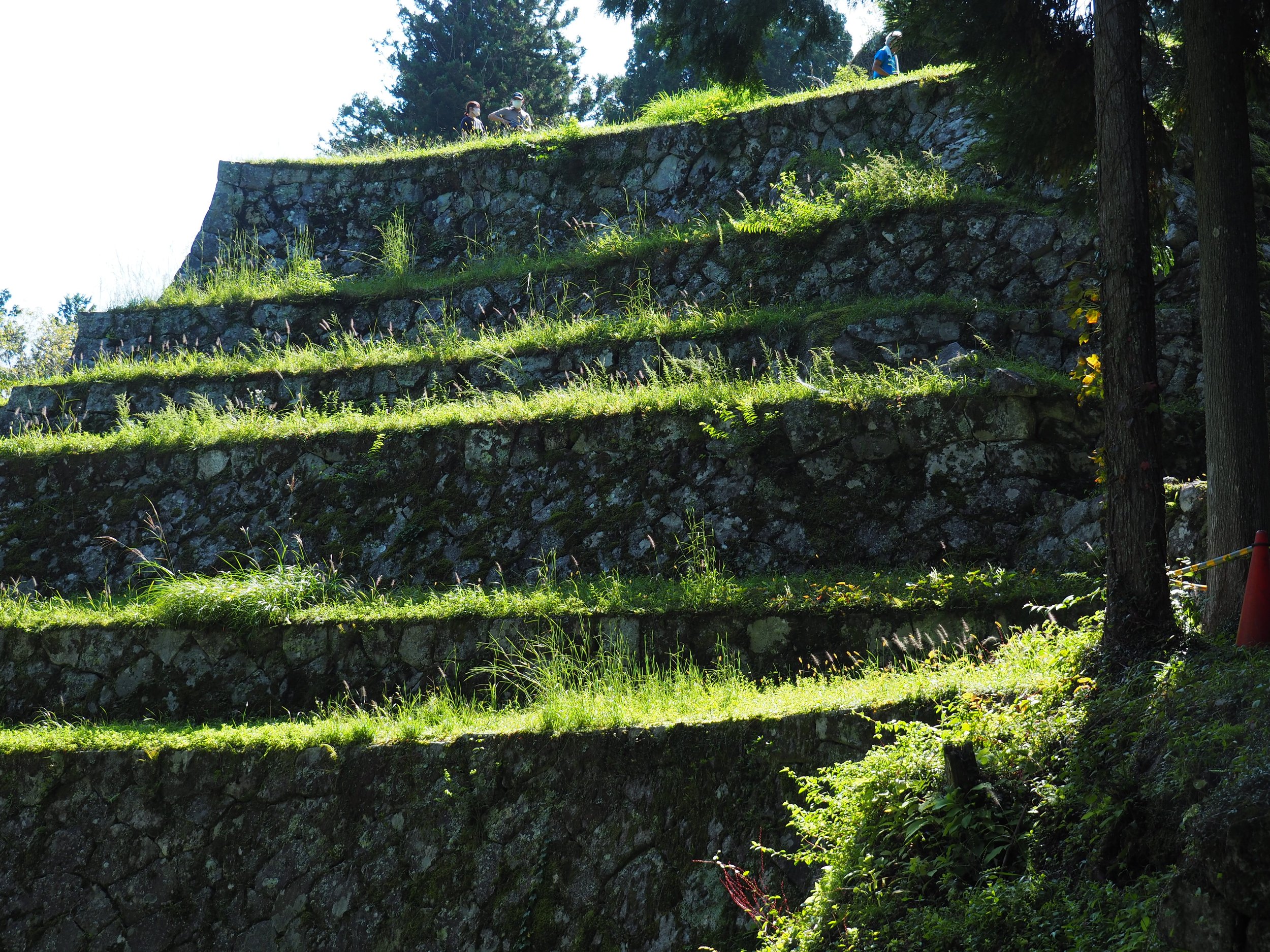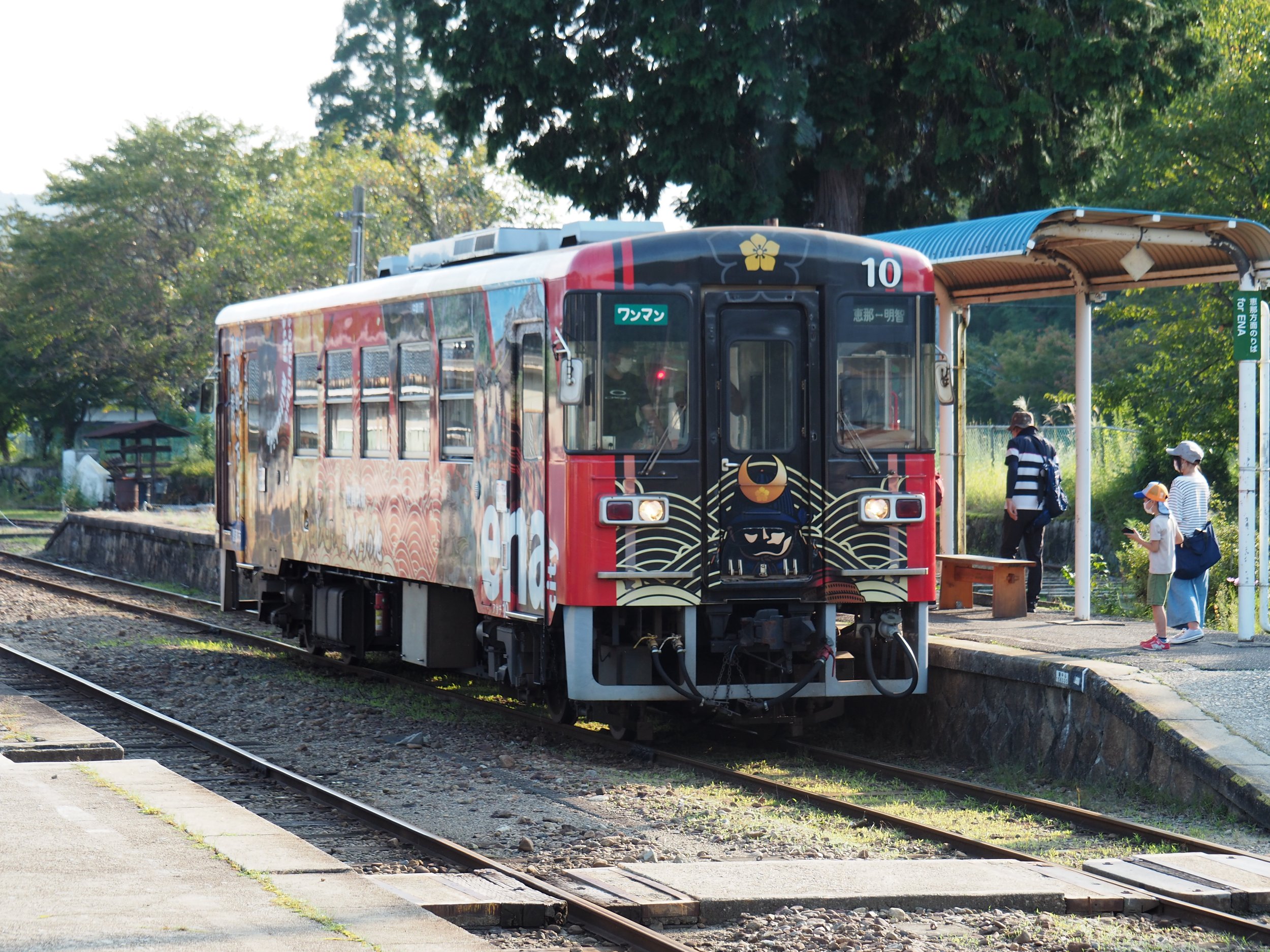Nakasendo
中山道
Semi Guided 5 Day Tours
In our opinion this is truly the best way to see the Japanese countryside. A combination of self guided days and guided days give you both the time and space to relax and walk quietly and thoughtfully by yourselves, but also an opportunity to escape from any other tourists and allow a local professional guide to show you something you could never find by yourselves. Really Rural Japan live local and pride ourselves on being the specialists of the Nakasendo and surrounding area. With our experience and expertise we have a few different semi guided tours to fit the needs and interests of our guests as well as the seasonal changes throughout the year. If you are not sure, contact us to find out what we think is the best tour package for you.
Due to high demand these tours are best booked 6-12 months in advance.











Nakasendo + South Shinshu
5 Day Semi Guided
-
Before the hiking begins, the first part of your tour is a travel day. Arrive in Nakatsugawa at your own pace and stay the night in a conveniently located, clean hotel. Your welcome pack will be waiting for you when you check. It will include our guidebook to the Nakasendo, bear bells, your itinerary and more. You should head out for a dinner of your choosing and get some rest because tomorrow the adventure really begins.
-
For a full tour description, click here:Magome to Tsumago
Description: The most famous hike in this region is popular for a reason. It starts in the fairytale-like village of Magome and ends in the stunning, and historically important, Edo period post town of Tsumago. The walk between the two villages is littered with unbelievable beauty such as ancient tea-houses, cascading waterfalls, crystal clean rivers, cypress forests, cobblestone roads, and more. For a 4km hike extension, try starting from the post town of Ochiai. We can tell you how to make that work and pop that into your itinerary.
Stay: Tsumago or nearby
-
For a full description of the Tenryu Gorge click here: Tenryu Gorge
For a full description of the Washi/Mizuhiki workshop click here: Washi & Mizuhiki Workship
The day starts with a morning 5km walk around the stunning Tenryu Gorge. From suspension bridges to deep forests and stunning rock formations! This morning hike has a lot to see in a short space of time! After lunch it is time to get a bit craftsy. The town of Iida is Japan’s primary producer of mizuhiki. These are colorful chords tied in elaborate, decorate, auspicious ways. They originate from the town's former washi (paper) industry and on this special tour, the two crafts are combined. A truly immersive and intimate experience.
Stay: Hirugami Onsen, Tenryu Gorge, or nearby
-
For a full description of the Tenryu Gorge click here: Odaira Juku
This day is one of the most immersive experiences on offer. After getting picked up in the morning, you will head to Odaira Juku, an completely abandoned village full of ancient houses. Once there you will rent an ancient house and use wood fire and the traditional kitchen to cook gohei mochi, a local delicacy and celebratory food. After eating lunch you can walk through the ancient town. Be warned that this is not suitable for those who get travel sick, have asthma or other issues brought on by smoke.
Stay: Hirugami Onsen, Tenryu Gorge, Odaira Juku, or nearby.
-
For a full tour description, click here: Tsumago to Nojiri
Description: This longer rambling hike of the Nakasendo passes actually passes through 3 post towns of the Nakasendo, Tsumago, Midono and Nojiri. This particular section of the Kiso Valley was particularly prone to floods and landslides and so while the Nakasendo, on a good year, would have followed the basin of the valley, times were not always good, and a sub-route was necessary. This sub-route is known as the Yogawa Michi or the road through Yogawa. A winding, mountainous route that takes you over the simply stunning, Nenoue Pass with its gentle stream amidst the forest. Expect to see beautiful agrarian views of the Kiso Valley, rice fields, meandering streams, and more on this simply beautiful hike southern Kiso. The hike can be adjusted to make it longer or shorter by starting/finishing in Tsumago or Nagiso Station.
Stay: Kiso Fukushima, Nojiri, or nearby.
-
For a full tour description, click here: Yabuhara to Narai
Description: The second most famous hike on the Nakasendo goes between the sleepy village of Yabuhara and the stunning post town of Narai Juku. This wonderful forest hike takes you over the Torii Pass, a pass once renowned for being one of the steepest, coldest and most challenging sections of the Nakasendo. These days, without palanquins to carry, it is very manageable, so please don’t fear too much. At the top of the pass you will find its namesake; a shinto torii gate marks the entrance to a shrine dedicated to the Ontake faith. From here, on a clear day, the peak of Mount Ontake, Japan’s second tallest volcano, can be seen over the mountains. Narai and Yabuhara prospered in the Edo period due to the difficulty of the Torii Pass. As a result the surviving town of Narai is impressively long to accommodate all of the travelers that wanted to rest before or after the pass. For a possible extension, Hirasawa is a town full of lacquerware craftsmen 2km away from Narai.
Stay: Not included
-
Difficulty: 2/5
Season: Apr 15 - July 15, Sep 15 - Nov 31
Price: $2,695 USD per person
Nakasendo + Deeper Kiso
5 Day Semi Guided
-
Before the hiking begins, the first part of your tour is a travel day. Arrive in Nakatsugawa at your own pace and stay the night in a conveniently located, clean hotel. Your welcome pack will be waiting for you when you check. It will include our guidebook to the Nakasendo, bear bells, your itinerary and more. You should head out for a dinner of your choosing and get some rest because tomorrow the adventure really begins.
-
For a full tour description, click here:Magome to Tsumago
Description: The most famous hike in this region is popular for a reason. It starts in the fairytale-like village of Magome and ends in the stunning, and historically important, Edo period post town of Tsumago. The walk between the two villages is littered with unbelievable beauty such as ancient tea-houses, cascading waterfalls, crystal clean rivers, cypress forests, cobblestone roads, and more. For a 4km hike extension, try starting from the post town of Ochiai. We can tell you how to make that work and pop that into your itinerary.
Stay: Tsumago or nearby
-
For a full tour description, click here: Tsumago to Nojiri
Description: This longer rambling hike of the Nakasendo passes actually passes through 3 post towns of the Nakasendo, Tsumago, Midono and Nojiri. This particular section of the Kiso Valley was particularly prone to floods and landslides and so while the Nakasendo, on a good year, would have followed the basin of the valley, times were not always good, and a sub-route was necessary. This sub-route is known as the Yogawa Michi or the road through Yogawa. A winding, mountainous route that takes you over the simply stunning, Nenoue Pass with its gentle stream amidst the forest. Expect to see beautiful agrarian views of the Kiso Valley, rice fields, meandering streams, and more on this simply beautiful hike southern Kiso. The hike can be adjusted to make it longer or shorter by starting/finishing in Tsumago or Nagiso Station.
Stay: Kiso Fukushima, Nojiri, or nearby.
-
For a full tour description, click here: Ontake Kodo
Description: An ancient pilgrimage route climbing in the lower regions of Japan’s 2nd biggest volcano, Mount Ontake. Expect mysterious mountain shrines, ancient trees, mind blowing waterfalls all steeped in ascetic Buddhism. The village of Otaki serves as the backdrop of this incredibly atmospheric and wholly out-of-this-world hike. Passing by Satomiya Shrine and then Omata Sansha, we hope you like stairs, because these two spots have a lot of them. The seemingly endless stone staircases leading to these two sacred sites of the Ontake Faith. Then two towering waterfalls and more mountain shrines make up the rest of an extremely immersive hike.
Stay: Otaki Village, Kiso Fukushima, or nearby.
-
For a full description click here: Hida Kaido
Cutting a route through the mountains, the Hida Kaido was a network of trails leading to the vibrant market town of Takayama. This hike takes you through the beautiful Kaida Plateau. The Jizo Pass and the Nishino Pass are the two hikes of a two part day divided neatly by lunch. Expect waterfalls, ancient relics, and incredible views of Mount Ontake on a clear day.
Stay: Kaida, Kiso Fukushima, or nearby
-
For a full tour description, click here: Yabuhara to Narai
Description: The second most famous hike on the Nakasendo goes between the sleepy village of Yabuhara and the stunning post town of Narai Juku. This wonderful forest hike takes you over the Torii Pass, a pass once renowned for being one of the steepest, coldest and most challenging sections of the Nakasendo. These days, without palanquins to carry, it is very manageable, so please don’t fear too much. At the top of the pass you will find its namesake; a shinto torii gate marks the entrance to a shrine dedicated to the Ontake faith. From here, on a clear day, the peak of Mount Ontake, Japan’s second tallest volcano, can be seen over the mountains. Narai and Yabuhara prospered in the Edo period due to the difficulty of the Torii Pass. As a result the surviving town of Narai is impressively long to accommodate all of the travelers that wanted to rest before or after the pass. For a possible extension, Hirasawa is a town full of lacquerware craftsmen 2km away from Narai.
Stay: Not included
-
Difficulty: 2/5
Season: Apr 1 - July 15, Sep 15 - Nov 31
Price: $2,295 USD per person
Winter Nakasendo
5 Day Semi Guided
-
The first day on your tour of the Nakasendo is a travel day. Arrive in Ena at your own pace and check into your hotel. Your welcome pack will be waiting for you when you check. It will include our guidebook to the Nakasendo, bear bells, your itinerary and more. If you arrive early enough, check out the Hiroshige Museum of Art (closed Mondays) to ponder the works of one of Japanese most celebrated block print painters and also painted the 69 Towns of the Nakasendo. Get some rest because tomorrow the adventure really begins.
-
For a full description, click here: Iwamura Castle Ruins
Description: A beautiful former castle town with a beautiful, short but steep walk up to the castle ruins. Iwamura is the true non-cliched definition of a hidden gem. A single carriage train weaves through the rice fields and forests, taking you to Iwamura. Then when arrive, two rows of Edo period architecture line the castle town’s road. Each shop is as charming as the next, there are cafes and restaurants serving local cuisine and the sake brewery in the town welcomes tourists for a tour of the brewery if prior booking has been made. After the town, the walk to the castle ruins is simply stunning. It is a short walk but rather steep and through dense forest on cobblestones. The castle served as a fortress and boasted the highest altitude of all castles in Japan at 712m above sea level. All of this without international tourism in sight.
Stay: Iwamura, Ena, or Nakatsugawa. Please fill out our trip design questionnaire and we will match your accommodation to your tastes and needs.
-
For a full tour description about Washi Making click here: Making Washi in Tadachi Village
For a full description of the Nakatsugawa to Magome hike (this tour only hikes the latter half of this), click here: Nakatusgawa to Magome
Description: To make your winter itinerary even more special, today is a cultural half day followed by a beautiful hike. The morning workshop will either be a washi making lesson, or a soba cutting cookery class. Washi has been made in the small village of Tadachi in southern Kiso for over 300 years. Today the traditions are kept alive by a small group of dedicated locals in the form of a preservation society. Soba is the life blood of the Kiso region, an area with little flat land available for growing rice. Soba noodles are hand cut everyday by several shops in the area. Here you can learn how to cut soba noodles yourself and then eat the results for lunch. After lunch, it is time for a hike. An afternoon walk from Ochiai to Magome (4km) highlights one of the most beautiful sections of the Nakasendo. The path takes you over the rare ancient cobblestone road of Ochiai Ishidatami before ending up in Magome.
Stay: Magome or nearby
-
For a full tour description, click here:Magome to Tsumago
Description: The most famous hike in this region is popular for a reason. It starts in the fairytale-like village of Magome and ends in the stunning, and historically important, Edo period post town of Tsumago. The walk between the two villages is littered with unbelievable beauty such as ancient tea-houses, cascading waterfalls, crystal clean rivers, cypress forests, cobblestone roads, and more.
Stay: Not included
-
The winter months make hiking without special gear a little more difficult. Sometimes it is best to embrace the cold and snow. So on this hike you will take a gondola and chair lift up and hike to over 1,700m using snowshoes. Expect cold conditions, lots of snow and incredible panoramic views on a clear day.
Stay: Hirugami Onsen, Nagiso, or nearby
-
Traditional Wood Spinning
Traditional Wood Spinning - For a full description click here: Rokuro Zaiku - Deep in the mountains of Nagiso Town is a village full of traditional craftsmen. This is Kijishi-no-sato, home of the craft of wood spinning in Japan (known as rokuro zaiku in Japanese). One shop in Kijishi-no-sato offers you the chance to try out the craft for yourself. After explaining the history and a demonstration from a master craftsman, it is time to get hands on. But not on an electric lathe, instead, you will be using the hand powered spinning machines that have been used for over 1,000 years in Japan. From the handmade chisels to the machine itself, this is a simple, historically authentic experience. But most of all, it is a lot of fun. It gives you the chance to spend some with local artisans and learn about their way of life.
Warnings - If going self guided, the shop will use phones to communicate with you as they do not speak English confidently. Also, the items that you make will be coated and sent to you 5 days later. If you are leaving Japan before then, you can take your plate with you uncoated but it may be problematic at customs and will not be food friendly.
Stay: Not included
-
Difficulty: 2/5
Season: December 16 - March 14
In winter, the hike can be a little snowy and icy so please take care and make use of the spikes (cleats) included in the welcome pack
Price: $2,695 per person
Summer Nakasendo
5 Day Semi Guided
-
The first day on your tour of the Nakasendo is a travel day. Arrive in Matsumoto at your own pace and check into your conveniently, clean located hotel. Your welcome pack will be waiting for you when you check. It will include our guidebook to the Nakasendo, bear bells, your itinerary and more. You should head out for a dinner of your choosing and get some rest because tomorrow the adventure really begins. If you arrive in Matsumoto with time to spare, take a look around the town. Matsumoto is home to Matsumoto Castle which is over 400 years old and some beautiful shopping streets in the heart of the old castle town.
-
Perhaps one of the most beautiful places in Japan on a sunny day. Kamikochi is a plateau at the base of the Hotaka Mountains of the Japanese Northern Alps. The hiking is nice and flat and easy going but moves alongside stunning emerald rivers, dense ancient forests, and has an unbelievable background of towering peaks and mind boggling ridgelines. The place can get a little crowded on the weekends especially. But it is popular for a very good reason. Get there and back by train and bus to complete this day trip.
Stay: Matsumoto
-
For a full tour description, click here: Yabuhara to Narai
Description: The second most famous hike on the Nakasendo starts in the sleepy village of Yabuhara and ends in the stunning post town of Narai. The wonderful forest hike takes you over the Torii Pass, a pass once renowned for being one of the steepest, coldest and most challenging sections of the Nakasendo. These days, without palanquins to carry, it is very manageable, so please don’t fear too much. At the top of the pass you will find its namesake; a shinto torii gate marks the entrance to a shrine dedicated to the Ontake faith. From here, on a clear day, the peak of Mount Ontake, Japan’s second tallest volcano, can be seen over the mountains. After that it is down to Narai. Narai prospered in the Edo period due to the difficulty of the Torii Pass. As a result the town is impressively long to accommodate all of the travelers that wanted to rest before or after the pass. After Narai, an optional 2 km more will take you to Hirasawa, a town full of lacquerware craftsmen.
Stay: Narai or nearby. Please fill out our trip design questionnaire and we will match your accommodation to your tastes and needs. In the case that you would like to stay in an ancient inn but they are fully booked out, a nearby town or city such as Kiso Fukushima or Matsumoto may be need to be used as a base.
-
Fora full tour description, click here: Ontake Kodo
Description: An ancient pilgrimage route climbing in the lower regions of Japan’s 2nd biggest volcano, Mount Ontake. Expect mysterious mountain shrines, ancient trees, mind blowing waterfalls all steeped in ascetic Buddhism. The village of Otaki serves as the backdrop of this incredibly atmospheric and quintessentially Japanese hike. Starting at Satomiya Shrine and then Omata Sansha, we hope you like stairs, because these two spots have a lot of them. The seemingly endless stone staircases leading to these two sacred sites of the Ontake Faith are our starting point before the hike starts proper. Then two towering waterfalls and more mountain shrines make up the rest of an extremely immersive hike. Takigyo (waterfall purification ceremony) may be a possibility for those genuinely curious in ascetic mountain worship.
Stay: Otaki Village, Kiso Fukushima or nearby
-
For a full description, click here: Mount Ontake
Description: Mount Ontake is the second-highest volcano in Japan after Mt. Fuji and the 14th highest peak in Japan at 3,067m. It is one of Japan’s most worshipped mountains with tens maybe hundreds of thousands of pilgrims making the journey each year. Ontake is the divine mountain of Ontake-Kyo, or Ontake Faith. A fully qualified alpine guide will guide this tour. If conditions are good, a summit may be possible. Regardless of the goal, this majestic mountain is full of beauty including alpine lakes, spiritual relics, shrines, forests, alpine flowers, and more.
Stay: Kiso Fukushima, Otaki Village, or nearby
-
For a full description click here: Kiso Fukushima Walking Tour
Kiso-Fuksuhima is the cultural and commerce capital of the Kiso Valley. However, because the Kiso Valley is so remote and sparsely populated, it is still a small quiet mountain town tucked away in the north of the Kiso Valley. During a day in Kiso Fukushima, the plan is highly customisable. You can enjoy historical museums, relaxing temples, taste sake at a brewery, go walking in the ancient town, or go for a hike in the beautiful mountains.
Stay: Not included
-
Difficulty: 3/5 (one extra point due to the heat)
Season: Mar 15 - Dec 15
Price: $2,495 per person
Prices
Our 5 day semi guided tours range from $2,295 USD to $2,695 USD. Please check the tour “info” bars above to see per person prices for each tour.
For solo occupancy = + $800
Children accompanying adults (4 -11) = Adult price - $200
Infants (0-3) = $900
What’s Included
Accommodation along the Nakasendo: 5 nights
Meals: 5 breakfasts and 4 dinners
Guides on specified days
Luggage delivery between all inns (1 bag per person)
Really Rural Japan’s guidebook “Hiking the Nakasendo” featuring maps, walking guides, history, travel advice, and more.
A custom made itinerary written just for your tour
Local telephone support
Bear bells (1 per person)
Spikes (winter tours only)
Cultural Experiences (when specified)
What’s Not Included
Lunches
Drinks
Transportation - To build time flexibility into your trip we like to leave the transport up to you. Don’t worry, your itinerary will be full of the advice you need to get around.
The Process:
Get in touch - Get in touch with us through our contact us form and let us know the name of the tour you would like to do (ex. “Nakasendo + South Shinshu: 5 Day Semi Guided”), as well as the other necessary information.
Confirm and finalise the plan.
Bookings - Now we can move onto bookings. We will try, as much as we can, to faithfully produce the itinerary. If something does not work, we will let you know as soon as possible and work around it.
Deposit - Once the bookings are made, a 20% non-refundable deposit is required to lock the tour in. Once this has been paid for, we will send you an online PDF copy of our guidebook “Hiking the Nakasendo” as well as a PDF detailed itinerary.
Final payment - Full payment of the remainder of the amount will be due 60 days prior to a tour. Failure to pay at this point could lead to cancellation of the tour.
Arrive and receive your welcome packs - At the specified hotel on Day 0 of your tour, your welcome packs will be waiting for you. This will include a physical copy(s) of the guidebook, bear bells, a detailed itinerary, and more.
Enjoy! - The adventure begins. Time to relax and have some fun!
Payments, Deposits & Cancellation Policy:
To lock in a booking, we require a 20% non-refundable deposit for the tour as soon as the bookings have been made. Then, full payment must be made at least 60 days in advance of the tour. If you are booking within 60 days of your tour, the total price of the tour must be paid immediately. Payments will be requested via credit card payable invoices. Our cancellation policy is as follows:
Effective once bookings are confirmed and agreed upon: 20% (non-refundable)
60 days prior: 35%
30 days prior: 70%
15 days prior and beyond: 100%
Should the cancellation come from our side due to unforeseen circumstances, 100% of the fee will be refunded. On rainy days, tours will go ahead unless the weather can be deemed dangerous, although our guides will do their best to offer alternatives on guided days if you prefer to stay dry.
Accommodation
Your accommodation will be some combination of minshuku (family run inn), onsen ryokan (traditional hot spring accommodation), and hotel. Sometimes you may need to share bathrooms with other guests, especially in the family run inns.








